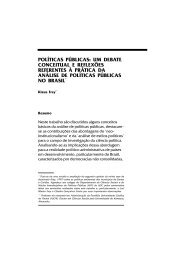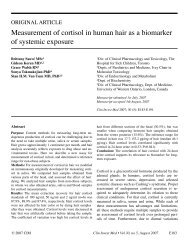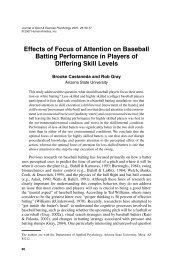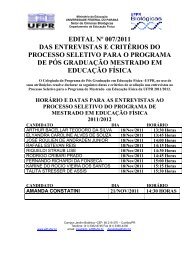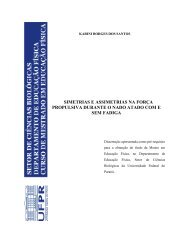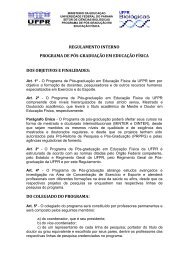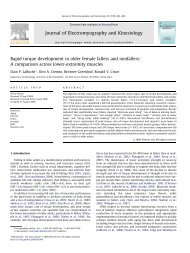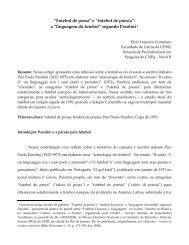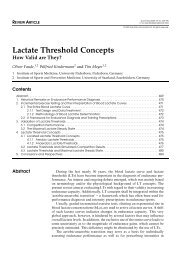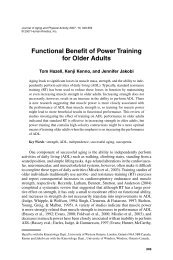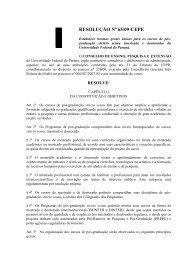BANI SZEREMETA - UFPR - Universidade Federal do Paraná
BANI SZEREMETA - UFPR - Universidade Federal do Paraná
BANI SZEREMETA - UFPR - Universidade Federal do Paraná
You also want an ePaper? Increase the reach of your titles
YUMPU automatically turns print PDFs into web optimized ePapers that Google loves.
22<br />
have a “sound identity” even when located in the midst of an environment that is prone to<br />
noise pollution. This definitively confirms the importance of analyzing the environment<br />
according to the soundscape study model. If the parks’ sound environments were evaluated<br />
based solely on comparisons of the ambient sound levels and the limit established by law, or<br />
only on the visitors’ opinions about these levels, any judgment about the acoustic comfort of<br />
these sites would un<strong>do</strong>ubtedly be arbitrary.<br />
The main hypothesis of this work was that environmental comfort was impaired by the<br />
fact that the parks in question are located in acoustically polluted regions (high noise levels).<br />
However, the interviewees proved to be more concerned with the esthetic (unpleasant) aspects<br />
of traffic noise, without, of course, disregarding the negative effect on acoustic comfort that<br />
this esthetic quality may have. Thus, it proved very difficult to assess ambient sound levels<br />
based on qualitative parameters because people’s perception of soundscapes is influenced by<br />
a combination of various factors.<br />
In short, the opinion of the population in conjunction with the analysis of quantitative<br />
parameters is effective and can be very important for a better understanding and identification<br />
of the qualities that confer environmental comfort, in order to provide effective support for<br />
urban projects.<br />
This study is considered innovative in its use of the soundscape assessment model in<br />
open areas in the city of Curitiba. The aim was to obtain an initial impression of how the<br />
parks’ visitors relate to their soundscapes. No <strong>do</strong>ubt increasingly in-depth studies and<br />
analyses involving professionals from different fields of knowledge will provide additional<br />
information and further interpretations about the soundscapes of parks and other public<br />
spaces, revealing the wealth of detail of the subject and the complexity of man’s relation with<br />
the sound environment.



